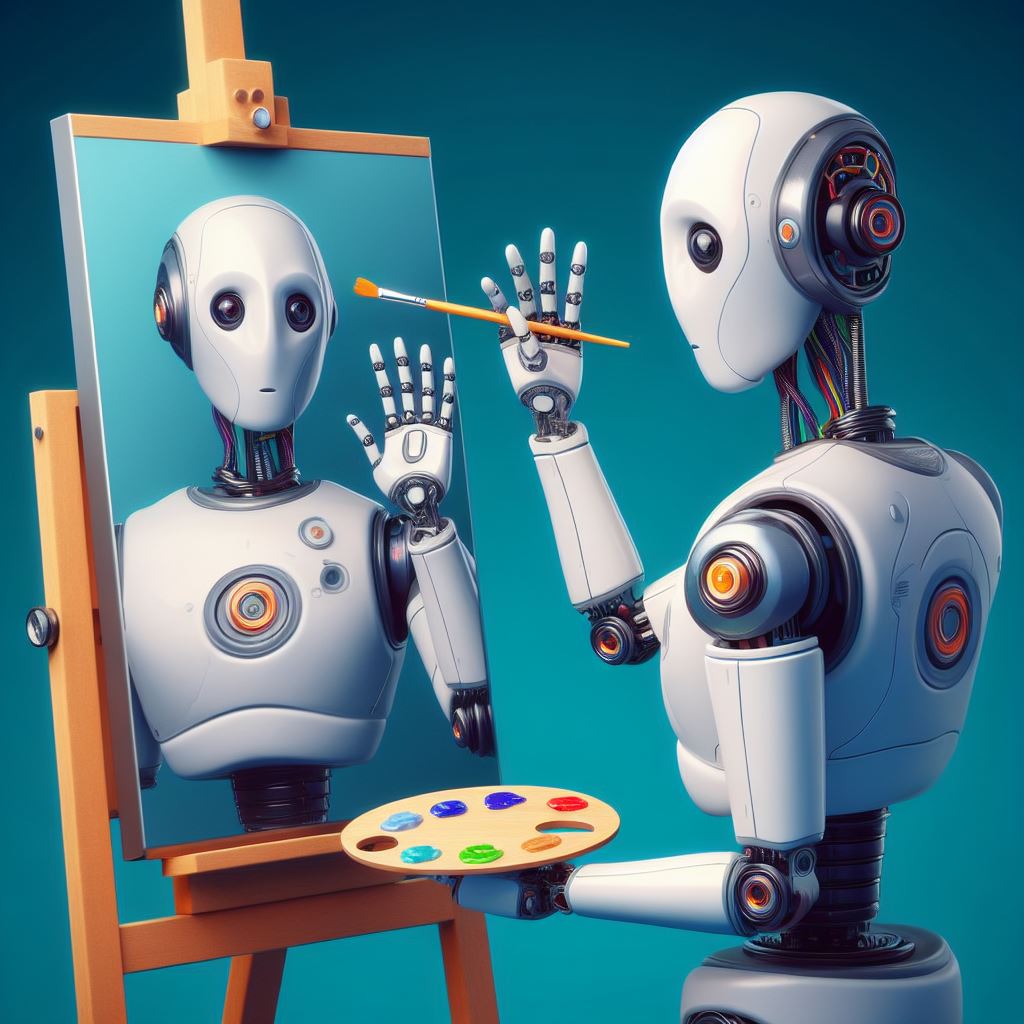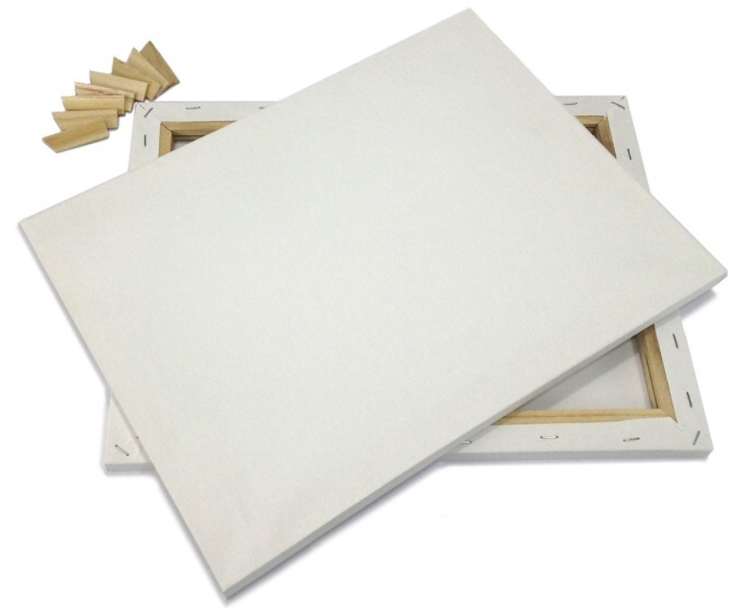It’s been a few years since our last competition. Robotics have seen advances in leaps and bounds. Art have blossomed in even more directions. Artificial Intelligence have transformed from a Sci-Fi villain to a tool our grandparents can use! This year, in addition to showcasing your robotics wizardry and artistic vision, we opened a new award category for the best application of AI!
Read more about robot art (useful for journalists/press.)
Goals
- Foster innovation in AI, image processing, and robotics
- Challenge teams to apply technical skills in creative ways
- Integrate aesthetics and technology
- Encourage participation by the public
Rules
- Team are open to everyone. Please read about prize payment information below.
- Each team can submit up to six distinct art works in each of the two categories.
- Paint/color must be applied with one or more physical brushes by a robotic system. Work done by an ink-jet-like matrix printer will not qualify.
- We are flexible of what type of robot is used (arm, swarm, drone, roomba, etc)
- You can use up to 8 different manually premixed colors of your choice during the entire painting process. These colors can be mixed together by the robotic system in an intermediate stage (e.g., on a palette).
- While existing artwork (e.g., Mona Lisa) can be used as a basis of the final submission, a photo of the existing artwork must be uploaded and referenced.
- There is no time limit for creating the painting
We reserve the right to make minor adjustments to these rules at anytime in order to preserve the goals of the contest.
Categories
1. Original Artwork
This category is for artwork where no specific reference image or material are used.
2. Re-interpreted Artwork
This category is for artwork that is painted using a reference image such as a photo or an image of a famous painting.
3. Standard Painting
Everyone will use the same source material for their painting. The goal is to compete on painting techniques and algorithms. The source images will be posted here before registration opens.
4. Artificial Intelligence Application
We’re not looking for AI-generated images. The works will be judged based on the best application of both AI, robotics and art.
Deliverables
Each team can submit up to six artwork in each of the four categories. As the judging of the contest is entirely online, we require teams to upload their artwork and supporting material. For each artwork, the team must upload:
- photo of final painting
- several photos of painting in progress
- link to a video or playlist of painting in progress
- several photos of team & robotic system
- photo reference of any prior artwork used
- optional short write up on how it was painted (1-3 pages). Ideally, you would disclose the technical contributions of your work so that others can learn.
- (optional but encouraged) link to code repository. Sharing tools and techniques is key to the growth of robot-involved art.
The winners must ship 1-3 pieces of their artworks to Seattle for an art show before receiving prize money/donations. We are requiring this to ensure a solid gallery show in August 2025. There is no requirement to sell the artwork and they will be returned to you after the show if you choose. We would also like you to consider coming to the gallery show and showcase your painting robot (e.g., live demo).
Note: Teams agree that their artwork can be used for non-commercial promotion of this contest (e.g., journalistic review). Copyright belongs to the team.
Judging
Winners are based on a combination of public (40%) and professional (60%) judges.
For the public, anyone with a Facebook account can vote on their favorite artwork based on:
- overall originality and aesthetics of artwork (e.g., do you like the painting, impressed with the skill of the “painter”) [100%]
Voters get 20 tokens which they can give to any combination of artworks they choose. At the end of the competition, we simply add up all the tokens for each team. This way, you are encouraged to submit as many different types of paintings as possible.
We will have several professional art critics judge the artwork based on:
- overall originality and aesthetics of artwork (e.g., do you like the painting) [25%]
- “painterly” ability (e.g., use of layers, energy/subtleness, blending) [50%]
- technical contribution (e.g., shared source code or algorithms) [25%]
The judges will consider either all the works done by a team… or even a single artwork. It’s their choice. Teams are not penalized for having an assortment of different types of paintings (e.g., it’s also ok to upload a few paintings of varied quality to help people show progress. Just relax!). We will also factor in how the painting process aligns with the spirit of the contest. That is, artwork that are created by an articulated robot with a brush and paint will be scored higher than artwork created with plotter-type systems.
Prizes
The top teams prizes are as follows:
- Original Artwork ($25k total)
- Re-interpreted Artwork ($25k total)
- Standard Painting ($25k total)
- Artificial Intelligence ($25k total)
Five prizes will be awarded to each category:
1st – $10,000
2nd – $6,000
3rd – $4,000
4th – $3,000
5th – $2,000
Note: Teams need to mail in at least one of their artwork to receive their prize. The artwork will be returned after the exhibition.
Optional top technical contributor (defined by judges and the teams themselves based on the teams ability to share technical skills and software with the community) – $5,000
Since the funding of this contest comes from Andrew Conru’s personal non-profit, the majority of the proceeds must go to a US-based charity or school as follows:
Team from US schools
80% goes to the school, 20% goes to the team members directly (one check).
Team from schools outside US
20% goes to the school, 70% to US-based charity of the team’s choice, 10% goes to the team members directly (one check).
Team unaffiliated with a school
80% goes to a US-based charity of the team’s choice, 20% goes to the team members directly (one check).
Schedule
Sep 1st, 2024 – team registration opens
Nov 1st, 2024 – teams can start uploading artwork (we might open this earlier)
May 1st, 2025 – team registration deadline (we just want to have an idea on how many teams are competing for press releases/media)
June 1st, 2025 (midnight PST) – deadline for content upload. We strongly encourage you to upload artwork early to give us time to make sure that you have the needed supporting material such as video or docs. Remember, you need at least a video of the robot in action. A partial or sped-up video is fine.
June 1st to June 10, 2025 – open to public voting & professional judges
June 11th, 2025 – winners announcement
Art Exhibition (suggested size and materials)
We anticipating having 20-30 paintings in an art show in Seattle in the summer of 2025. We encourage artwork to be painted in standard sized canvases to simplify showing them at the exhibition if we decide to put the artwork in standard frames.
Typical frame sizes:
- 4″ x 6″
- 5″ x 7″
- 8″ x 10″
- 9″ x 12″
- 11″ x 14″
- 12″ x 16″
- 18″ x 24″
- 20″ x 24″
- 24″ x 36″
- 30″ x 40″
- 36″ x 48″
If possible, please choose pre-stretched frames such as the ones shown below. Alternately, you could you use art panels (cheaper).
Why painting?
One of the first signs of human culture was our ability to express ourselves with images. From ancient cave paintings to abstract art, physically generated images have been a universal way for humans to express and communicate. Beyond simply replicating what is seen, artistically created paintings enable meaning in the way it’s created – what elements are left out, how color is used to heighten emotion, even the thickness or boldness of the application of paint has meaning.
The skills required to effectively paint are intrinsically human – graceful movement, sense of touch and pressure, ability to experience color and value.

